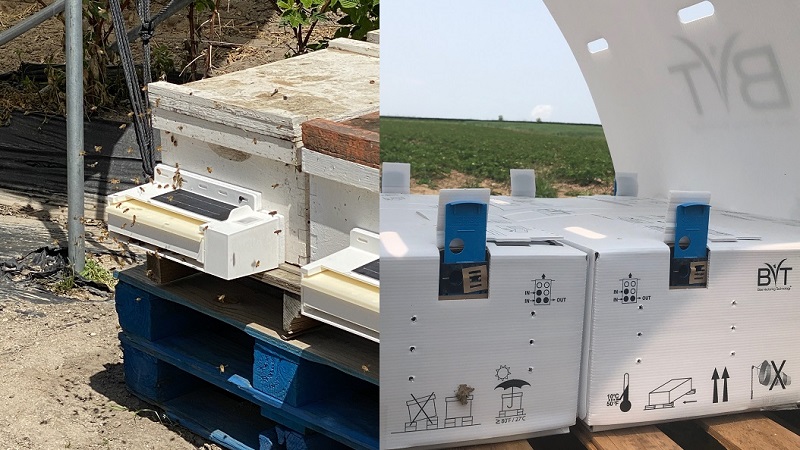Ways to Keep a Lid on Explosive Weed Problems in Berries
Effective weed control does not happen by accident. It takes knowledge about weeds on your farm, preventive control measures before planting, timely and persistently applying effective pre- and post-emergent herbicides and adopting a few innovative techniques.
I hope my suggestions for weed control in the berry plantings can be of some help to you.
Know Your Weeds
It is important to learn as much as you can about the common weeds in your area and on your farm. Find out whether they are annual, biennial, or perennial, and how they propagate. By doing so, you will be able to identify their weaknesses and select the most effective control method(s).
For example, yellow foxtail (Setaria pumila Poir. Roem. & Schult), is a summer annual. Its seeds should be controlled with a pre-emergent herbicide before they germinate in the spring. Some of the seeds will continue to germinate throughout the summer. Hence, an effective barrier of a pre-emergent herbicide will be helpful in preventing the weed seeds from germinating. Post-emergent herbicide is mainly used for those seeds that managed to germinate due to the failure of the pre-emergent herbicide.
Canada thistle (Cirsium arvense L. Scop.) is a perennial weed and is one of the most difficult weeds to control. You will need everything you have in your toolbox to control it. It is critical to control the plants when they are small — cut the tops down and spray the new sprouts with a systematic herbicide.
Digging out Canada thistle may not work that well since root segments as small as a quarter inch can develop into more plants. It is also important to control the weeds before they go to seeds. Otherwise, birds will eat the seeds and spread them everywhere on your farm. One of our raspberry growers, Mike Pullins, told me that he also controls the Canada thistles between rows. This is because Canada thistle can spread with rhizomes as well.
Prevention
There are several ways to prevent weeds from invading your berry planting. Carefully managing weeds before planting, regularly cleaning farm machinery, and using weed fabric will go a long way. Therefore, we recommend preparing the soil one or two years and using a non-selective herbicide to kill all the existing vegetation before planting. You may have to repeat applications to get rid of most of the weeds. When in doubt, read the product label.
Another good preventive measure is to use weed fabric. Most weeds will not be able to get through the weed fabric, and you will save yourself lot of time and frustration. Occasionally, I see some escapees. You can get them with a post-emergent herbicide. Weed fabric is commonly used in blackberry and blueberry plantings.
Persistence
If your berry patch is invaded by lots of weeds, you will need a lot of patience to deal with them. You may need to use a mechanical tool, such as a Weed Eater, to cut the weed vegetation down to a more manageable level.
Shallow cultivation is another good method to control weeds. Pullins uses a Green Hoe as one version of mechanical weed removal.

A tractor-mounted Green Hoe driven by Mike Pullins of Champaign Berry Farm in Urbana, OH.
Photo by Gary Gao
“Any cultivation is very shallow — only a half-inch to an inch to cut weeds. Sometimes I spray a pre-emergence herbicide through a nozzle attached to the implement,” Pullins says. He also says other advantages to the Green Hoe are that it can be used to control growing weeds, as post-emergent herbicides are extremely limited in raspberries. It also can be used for weed control when herbicides are prohibited by pre-harvest interval, or PHI.
Several other companies make related products. Our farm manager, Wayne Lewis, got hold of a used Weed Badger for us and was able to fix it with a self-fabricated part. My research assistant Ryan Slaughter absolutely loves it!
Innovations
There are quite a few innovations out there. One area of innovation is the introduction of new herbicides, or new formulations. The most frequent problem is weed resistance to glyphosate. According to Dr. John Strang, Professor, University of Kentucky, “In my experience, growers need to be very careful with the use of glyphosate on blackberries and blueberries, as both crops are very sensitive.”
Glufosinate has been used to combat weeds that are resistant to glyphosate. Check out their latest spray guides, since herbicide registrations are quite different in each state for each berry crop, and even at different plant ages. In the Midwest, one of our popular spray bulletins is the “Midwest Fruit Pest Management Guide.”
I hope I have given you some useful ideas. I am constantly amazed by how innovative you all are. Feel free to share your innovative ideas with me. I would love to hear from you.











